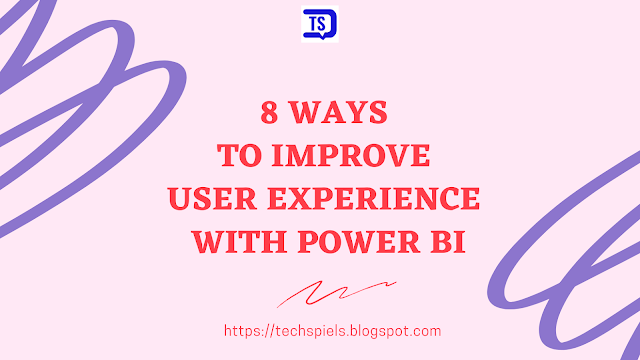Microsoft's Power BI is one of the most user-friendly ways to obtain insights that provide all of the information you need to know by simply skimming a dashboard, making it ideal for businesses looking to get the most out of their company data while also enhancing user experience. Here are some suggestions for developers creating these tools as you build your app dashboard and configure your automatic reporting.
Reasons why you should opt for Power BI?
Begin straightaway
Due to its simple user interface, lack of technical knowledge or training requirements, and ability to integrate with a wide range of data sources, Power BI is a very flexible and user-friendly business intelligence solution. Microsoft currently provides Power BI Desktop without charge.
Increasing business users' efficiency
With its interactive, immersive Power BI interface, which provides business users with quicker access to crucial information in real time, Power BI saves time. Viewers are quick to solve issues and spot opportunities. According to studies, organizational efficiencies combined with average weekly savings of 1.25 hours reach a value of $3.6 million.
Minimize ownership cost
With Power BI, data can be made more accessible to a wide range of users in a matter of minutes, facilitating the modification, analysis, and visualization of the data. In other words, Power BI expands the quantity of data that users can use without expanding the core analytics and IT workforce.
Fulfilling the safety and regulation needs
By providing data segregation, Power BI assists you in establishing a secure data analytics foundation for your company. As a result, users are unable to access information that they shouldn't. Enhancing data security also helps with internal and regulatory compliance.
Increasing employee happiness
Power BI promotes data democratization, assisting in the creation of a data-centric mindset within businesses. Because they are more data-driven and data-informed, employees feel more in control. An improved retention rate among employees results from this.
Grasp the eight best practices to improve user experience with Power BI
1. Recognize the end user
The overall usefulness of reports and dashboards can be greatly increased by taking quick steps to simplify them. Using decimal points to scale large numbers and developing a consistent naming system with your audience in mind can speed up production and result in dashboards and reports that are simple to read and comprehend by those who aren't on your internal development team.
2. Ensure usability
Usability is the basis for enjoyable experiences and speeds up users' ability to find what they need. Ensure to clearly label icons with their intended purposes. Select the ideal font size. Make sure your program makes logical sense. It's important to always keep in mind that consumers don't have the time or patience to try to figure out how to utilize an application to do tasks.
3. Designing is quite important
A Power BI theme should be trendy, new, and stylish so that people may like it at first sight. Only the desktop app created with Power BI can incorporate a theme, but once it is set, it may be saved for further usage. Colors, backgrounds, typefaces, visualizations, and the color your filter window will appear in are all part of a theme.
4. Testing is a must
Developers can experience loading times firsthand by testing the effectiveness of each image in order to get a sense of what the ultimate user experience will be like. It would be worthwhile to explore switching to a new graphic that creates a more seamless overall reporting experience if the custom visuals aren't quick enough.
5. Use custom visuals
Power BI-certified visuals are custom graphics from AppSource that have passed stringent quality testing. According to Microsoft, certified power bi custom visuals need to have reliable, performant code. In the Export to PowerPoint mode and through email subscribers, only verified bespoke graphics are seen.
6. Employ tooltips
No matter how attractive your Power BI app or dashboard is, some of the data may be useless without context. With just one click, users may dive down further into the information by using "tooltips," which can instantly give the essential context. It is advised to keep the dashboard at a higher level and add tooltips to provide more detail without taking up more space.
7. Boost the loading speed
Design is more about how effectively your software functions than it is about how it appears. You've already lost a visitor by waiting a few seconds for a page to load. Although elaborate widgets and complicated JavaScript can produce a stunning user experience, speed always takes precedence over creativity.
8. Experiment with different things
The secret key is creativity. Don't be afraid to offer something innovative and original because it can greatly enhance user experience and increase the likelihood that people will connect with you. Therefore, when working on a Power BI project, be sure to incorporate some original design elements, such as changing the font or separating the sidebars, to give the app a creative edge.
Conclusion
The user interface serves as the public face of your organization and has a significant impact on how customers perceive you. As a result, always ensure that your user interface is speedy, simple, and enjoyable to read. Keep an eye out for consistency in the content and clear up any ambiguity that may develop while using the app. An app's end-user experience might succeed or fail.

Comments
Post a Comment